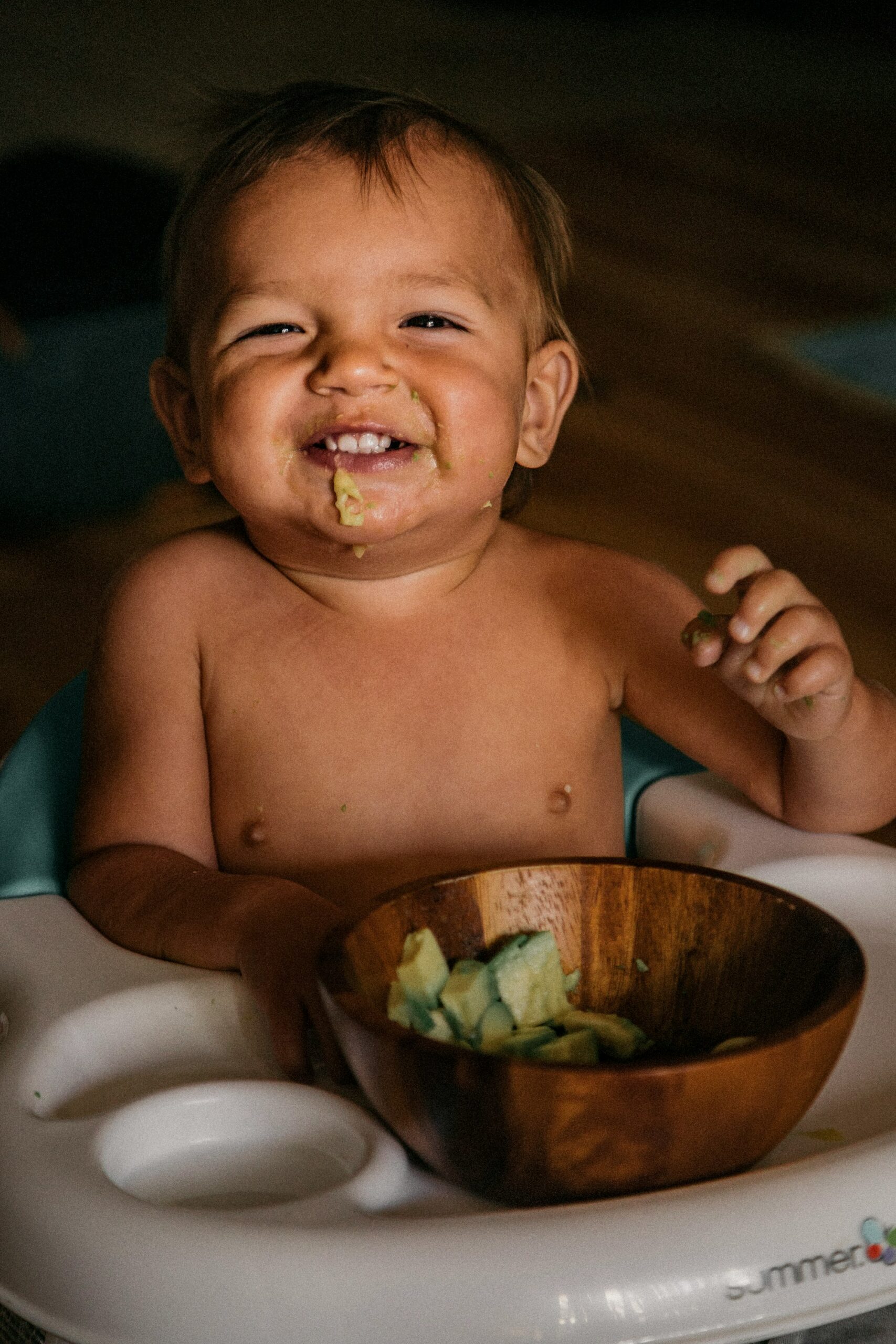The journey from exclusive milk feeds to the vibrant, sometimes chaotic realm of solid foods—what a milestone for any family! Navigating this passage, baby led weaning stands out for its promise of autonomy, sensory exploration, and joyful mealtimes. Yet, the prospect of letting infants grasp their own food, amid worries about nutrition, allergies, or safety, sparks a thousand questions. Will baby led weaning suit your little one? When is the right time? What if iron or fat intake falters? You might wonder, should one blend purees and finger foods, or follow a strict path? Allow yourself a breath—solid food introduction need not be fraught with stress. Together, let’s unfold clarity on readiness signals, safe food textures, nutritional strategies, how to prevent picky eating, and why the family table can become a true classroom. Prepare to reimagine the first bites, guided by evidence and empathy.
Understanding Baby-led Weaning: Key Foundations
What sets baby led weaning apart? Here, the baby, not the adult, takes the lead. No more covert spoonfuls masked with theatrics—rather, well-chosen finger foods laid out, yours to inspect, squish, maybe toss, but certainly to taste when intrigue overcomes hesitation. The transition often begins near 6 months (sometimes a stretch earlier, sometimes a nudge later, and that’s perfectly normal with individual developmental pacing).
Three major markers indicate readiness:
- Sitting upright, quite steady, without wobbly support.
- Losing the tongue-thrust reflex (that automatic shooing away of non-milk items).
- Demonstrating curiosity—tracking the family fork with keen eyes, reaching out for colourful morsels, perhaps even a surprise grab onto your chapati.
Underlying the simplicity, there’s genuine science: self-feeding encourages early oral-motor skills and coordination, setting the groundwork for future speech and independent eating. Varied exposure? Absolutely—when the plate holds different shapes, colours, and textures (do remember, soft and mashable trumps crunchy or sticky). Teeth are optional—gums possess surprising mashing prowess!
The Benefits of Baby-led Weaning: Independence and Beyond
Isn’t it remarkable how much learning happens at the table? With baby led weaning, the journey goes well beyond mere calorie intake:
- Autonomy: Each meal becomes an act of self-determination, bolstering self-confidence and agency.
- Development of fine motor skills: Picking up soft carrot batons, transferring slippery avocado—such tasks fine-tune the pincer grasp and hand-eye synchrony, essential for writing or threading beads in years to come.
- Dietary diversity: Familiarity breeds acceptance—the more tastes and colours crossed paths with, the less likely food rejection looms in toddlerhood.
- Social and emotional cohesion: Meals become interactive lessons in sharing, chatting, observing, and mimicking healthy eating patterns.
Parents may find joy, too, as shared mealtimes foster togetherness, conversation, and even a touch of kitchen creativity.
Nutrition in Baby-led Weaning: What Science Tells Us
Could an infant’s self-selection leave nutritional gaps? This concern weighs heavy, especially regarding iron, vitamin B12, and essential fatty acids (think omega-3, omega-6). Indeed, infants’ stores of iron wane by middle infancy, and breast milk alone may not bridge the gap. The keys:
- Inclusion of animal proteins—eggs, fish, tender chicken, or well-cooked red meat.
- Generous drizzle of vegetable oils—choose from walnut, rapeseed, soybean, or olive—into soothed vegetables or soft khichdi.
- Mindful salt and sugar intake—the immature kidneys and fresh taste buds favour mild, natural flavours. Avoid added salt, honey, and minimize sweet foods.
- Mixed approaches can help—sometimes, a little iron-fortified puree alongside finger foods ensures adequacy, especially if appetite wavers or fatigue shadows the highchair.
Should “BLW” be a rigid rule, excluding the occasional spoon? Not necessarily. Responsive feeding, observing cues of hunger and satiety, matters more than textbook purity. Hybrid methods come with benefits: early puree of allergenic foods (like peanut or egg) before switching fully to self-feeding finger foods when developmental benchmarks are met.
Allergenic Foods: Timing, Tolerance, and Safety
Here, the debates heat up, but evidence adds helpful nuance. Research on food allergy prevention points to the concept of a “tolerance window,” often between 4 and 6 months, when gentle, repeated exposure to allergenic foods (such as peanuts, eggs, dairy) may lower future risk. With baby led weaning, the main stage opens around 6 months, after this window; so what then?
A bridge solution—introduce pureed allergenic foods during the earlier months, then transition to baby led weaning as sitting confidence develops. Always, stagger introductions—give each allergen its moment, observe reactions, and if strong family allergy history or conditions like severe eczema run in the family tree, seek paediatric advice before starting.
Safety at the Table: Choking, Gagging, and Smart Preparation
The fear of choking often lurks in parents’ minds—a completely rational worry. Yet, when foods are cut to size, cooked soft, and adult presence is unwavering, the risk stays low. The science backs this reassurance: rates of choking are not higher in carefully supervised baby led weaning than in traditional approaches.
Best practices include:
- Seated upright in a sturdy high chair.
- Big pieces (think baton, not pea), soft enough to yield under gentle gum pressure—steamed apple, boiled carrot, soft rotis, all clear winners.
- Never offer hard, sticky, or round foods—no grapes, whole nuts, popcorn, or fibrous chunks of meat.
- Learn first aid—just as a backup, to keep worry in check.
A word on gagging: this protective reflex (distinct from choking) helps infants manage large bits, build “chewing before swallowing” habits, and gain confidence.
Getting Started: Practical Steps for Success
Where to begin? Pause for a calm, familiar setting—first foods are not for rushed evenings.
- Serve strips, batons, or wedges sticking out beyond the baby’s tiny fist for assured grip.
- Embrace the mess—food on the floor, in the hair, traced on cheeks. That’s processing, learning, growing.
- Watch for readiness cues: if your baby turns away, closes lips, or tosses food after a few seconds, trust it—they’ve had enough.
- Use only fresh, unprocessed foods. The allure of commercial baby snacks can be strong but keep faith in home-prepared, no added salt or sugar options.
Choosing the Right Foods and Textures
A variety-packed, thoughtfully curated plate paves the way:
- Soft, melting fruits: Ripe banana, pear, steamed apple, peach, papaya, or avocado.
- Tender, cooked vegetables: Steamed carrot, soft beans, zucchini, broccoli florets—or even pieces of pumpkin, as long as the texture is right.
- Larger pasta shapes, such as penne or chunky macaroni.
- Strips of chicken or expertly deboned fish cakes; vegan households may opt for legumes or tender tofu.
- Full-fat dairy: Plain dahi (yogurt), paneer (in soft cubes), or mild cheese.
Remember, until 12 months, breast milk or formula still anchors nutrition—solids augment, not replace, this foundation.
Crafting the Daily Routine: Milk and Solids In Harmony
What’s the schedule? Start with one solid meal a day, then raise the tally gradually – two by 9 months, up to three plus healthy snacks after one year. Timing: aim for mealtime when your baby is rested (not after a cranky spell).
Follow your child—hunger cues include reaching, eyeing food, or that wiggle of excitement when the highchair snaps shut. Signs of fullness? Slower tempo, head turned away, lips zipped. Let them decide quantity; resisting the urge to coax “just one more bite” lays the foundation for mindful eating for life.
Facing Common Troubles
Choking fears—with informed food prep and supervision, risk stays minimal. Knowing emergency protocol offers peace of mind.
Nutrition worries—if iron, healthy fats, or B12 seem lacking, incorporate animal proteins, plant oils, and mixed feeding for a season. Some days are “nibbly,” some days are “hearty”—growth, wet nappies, and energy count far more than empty plates.
Mess stress—embrace it! Hand-mashed dal splattered on cheeks? Yes, it’s messy now, but sensory discovery blossoms from such textures.
Fussy eating—the solution? Neutral persistence. No pressure to eat, repeated casual offerings across weeks; acceptance arrives in time.
Special Circumstances and Cautions
Baby led weaning may not suit every scenario. Care is warranted:
- Severe eczema, early asthma, or strong family allergy history suggest a slower pace, with mixed feeding and earlier allergen trials under medical oversight.
- Premature infants or those with unique neurodevelopmental pathways may need a later start and customized advice—paediatric guidance is invaluable here.
Adapting approaches fosters a safer, more inclusive mealtime for all.
Family-Friendly Baby Led Weaning Recipes
Sometimes, inspiration is all that’s needed for a joyful table:
- Oven-baked vegetable sticks: Sweet potato fries, carrot batons, steamed zucchini.
- Soft fruit slices: Papaya cubes, ripe pear, or steamed apple slices.
- Egg preparations: Strips of omelet, softly scrambled eggs.
- Tender meats: Slow-cooked shredded chicken, softly rolled meatballs.
- Deboned fish cakes, cubes of tofu, mini khichdi balls (rice and lentil mix)
Simple tweaks—no salt, modest oil, fresh produce—render every shared meal suitable for the littlest member.
On the move? Pack steamed veggies, soft fruits, or homemade snacks; eating out, choose plain, simply prepared dishes for an easier transition.
Monitoring Progress and Encouraging Healthy Growth
How to know if things go well? Consistent growth, steady weight gain, and an enthusiastic attitude towards food are reassuring. Regular paediatrician follow-ups matter—tracking milestones, watching trends, and discussing any hurdles. Families sometimes find value in jotting down foods tried, responses, and new skills (the first-shared chapati moment is always worth a date!).
Should growth slow or allergies spark, professional guidance ensures timely, tailored support.
Key Takeaways
- Baby led weaning celebrates independence, sensory learning, and a positive food relationship from day one.
- Readiness matters—sitting upright and showing interest pave the way for safe and successful solid introduction.
- Together, careful meal prep and attentive supervision keep the risks low and experiences rich.
- Varied textures, flavours, and nutrient-dense foods nurture resilience against picky eating and set the stage for lifelong healthy choices.
- Introducing allergies early, in a stepwise, observed fashion—especially for at-risk infants—safeguards future tolerance.
- Flexibility and responsiveness—mixing purees with finger foods when appropriate—ensure nutritional completeness.
- Professional resources stand by your side, and every baby’s pace is normal—celebrate each step.
Desire personalised advice, practical meal plans, or free health questionnaires for your child? Download the application Heloa for expert guidance, tailored to your family’s unique story. Support is always at hand.
Questions Parents Ask
Can baby led weaning be combined with breastfeeding or formula?
Absolutely! Baby led weaning perfectly complements ongoing breastfeeding or formula feeding. Until one year, milk is still the primary nutritional backbone, with solids playing a supporting, exploratory role. You may notice that as your little one’s solid intake climbs, milk feeds drop naturally—the transition dances to each baby’s individual rhythm.
Are there foods to avoid during baby led weaning besides choking hazards?
Definitely—apart from known choking risks, it is wise to avoid honey under 1 year (to prevent infant botulism), cut back sharply on added salt and sugar, and skip certain types of fish like shark and swordfish due to mercury. For dairy, stick to pasteurised products to minimise infection risk.
How do I know my baby is eating enough with baby led weaning?
Early on, much of the plate may end up everywhere but the mouth—stray peas, smeared dal. This is completely normal! What matters most is your baby’s steady growth and maintaining a good number of wet nappies. Watch for clear cues: interest when hungry, turning away or getting distracted when full. Trust their instincts—they are natural eaters, just learning at their own pace. If you feel unsure, your healthcare professional is best placed to reassure and review progress.
Further reading :









